Legion is an intelligent workforce engagement platform that leverages machine learning and artificial intelligence to accurately forecast demand and automatically match employees to work. By addressing the needs of both retail and service organizations as well as a new breed of hourly employees invested in the gig economy, Legion has proven to successfully reduce labor inefficiency, while increasing employee job satisfaction, tenure, and subsequently quality of product and service.
I began my partnership with Legion at its inception in the Spring of 2016, sitting down with the founder and CEO to understand the problem Legion was aiming to solve.

Much has already been written about the "retail apocalypse", the seismic shift the retail industry is facing due to waning consumer interest in brick & mortar in favor of the online experience, subsequent plummeting sales, widespread store and mall closings, and even bankruptcy of former retail giants.
U.S. hourly employees represent an estimated 79.9M people — approximately 56% of the total U.S. workforce. Businesses relying on this workforce have always faced the same challenges: high employee turnover and cost of replacement. In recent years, however, new issues have emerged that have severely tested their ability to hire and successfully retain hourly employees, appropriately staff store locations, and deliver a consistently high quality customer experience that keeps consumers coming in, rather than going online.
For hourly service workers, the emergence of the gig model has dramatically expanded their options, allowing them the choice of supplementing their regular salary with additional income or balancing multiple gigs to bring in income, without having to commit to a single part-time or full-time job.
For businesses within the service and retail industries, the bar has been raised for how accurate, efficient, and adaptable businesses need to be in order to survive.
For retail consumers, the prevalence of apps providing online within-the-hour delivery, ordering and payment for pickup, and temporary and mobile storefronts have all vastly expanded the ways in which they now expect to be able to access products and services.
For retail businesses, it's not enough to enable purchases to be made in-store or online. In order to better serve their customers and meet their expectations, retail businesses must now seamlessly accommodate a range of new services — in partnership with 3rd party vendors or via their own branded app. The result is increased technical and service demands made upon the business.

Legion was conceived as a platform that would leverage machine learning and artificial intelligence to address essential facets of the retail crisis.
Millennial hourly workers would be engaged by the flexibility, personalization, and smart features offered through Legion's mobile app.:
For businesses, Legion web console would leverage advanced machine learning to optimize the supply and demand equation:
With both apps working in concert, the Legion platform would empower retail businesses:

While the market was saturated with employee scheduling, management and HR tools, a company had yet to tackle the problems related to hourly workforce engagement and management holistically, as Legion was aiming to do.
Given the ongoing public discussion of both the dire state of retail and the impact of the gig economy, it was imperative that we move quickly and take Legion from an idea to functioning platform as soon as possible. Relishing the challenge before us, I joined the CEO and CTO in Legion's core team of 3.



Within a few months, we succeeded in getting core functionality for both the mobile and web apps designed, developed, and ready to demo. With our Phase 1 goals met, I was excited to move forward to the next phase where I would be able to take full ownership of the full Legion user experience and brand — refining, optimizing and expanding both apps in order to assist Legion in taking the Legion platform to the next level.

The plan over the next 3 quarters was aggressively ambitious: expanding both the web console and mobile apps to full functionality, making design and architecture refinements to the Legion platform to both accommodate new features, solidify the brand, and provide a first-class user experience that delivered upon Legion's value proposition for both companies and employees.


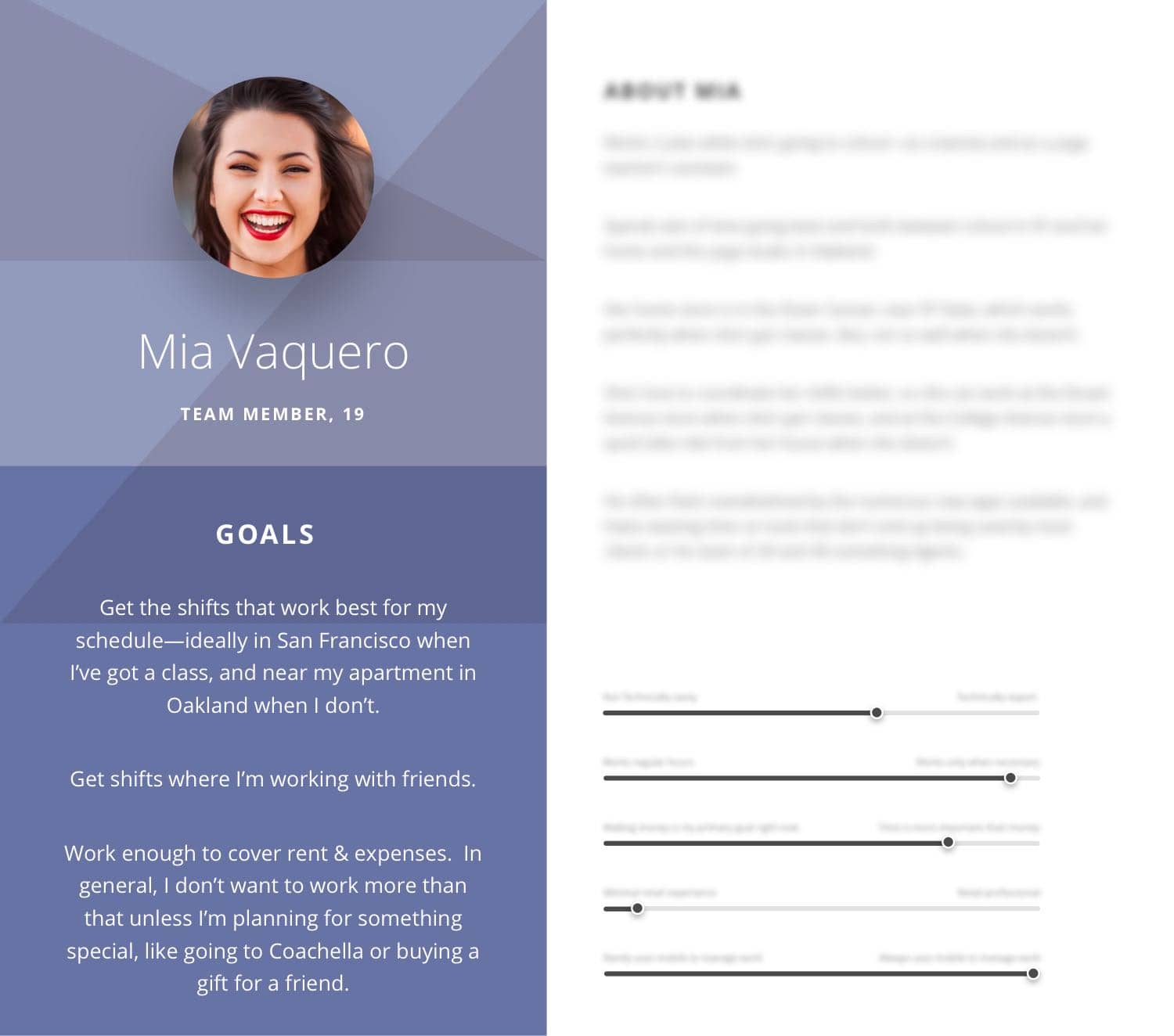
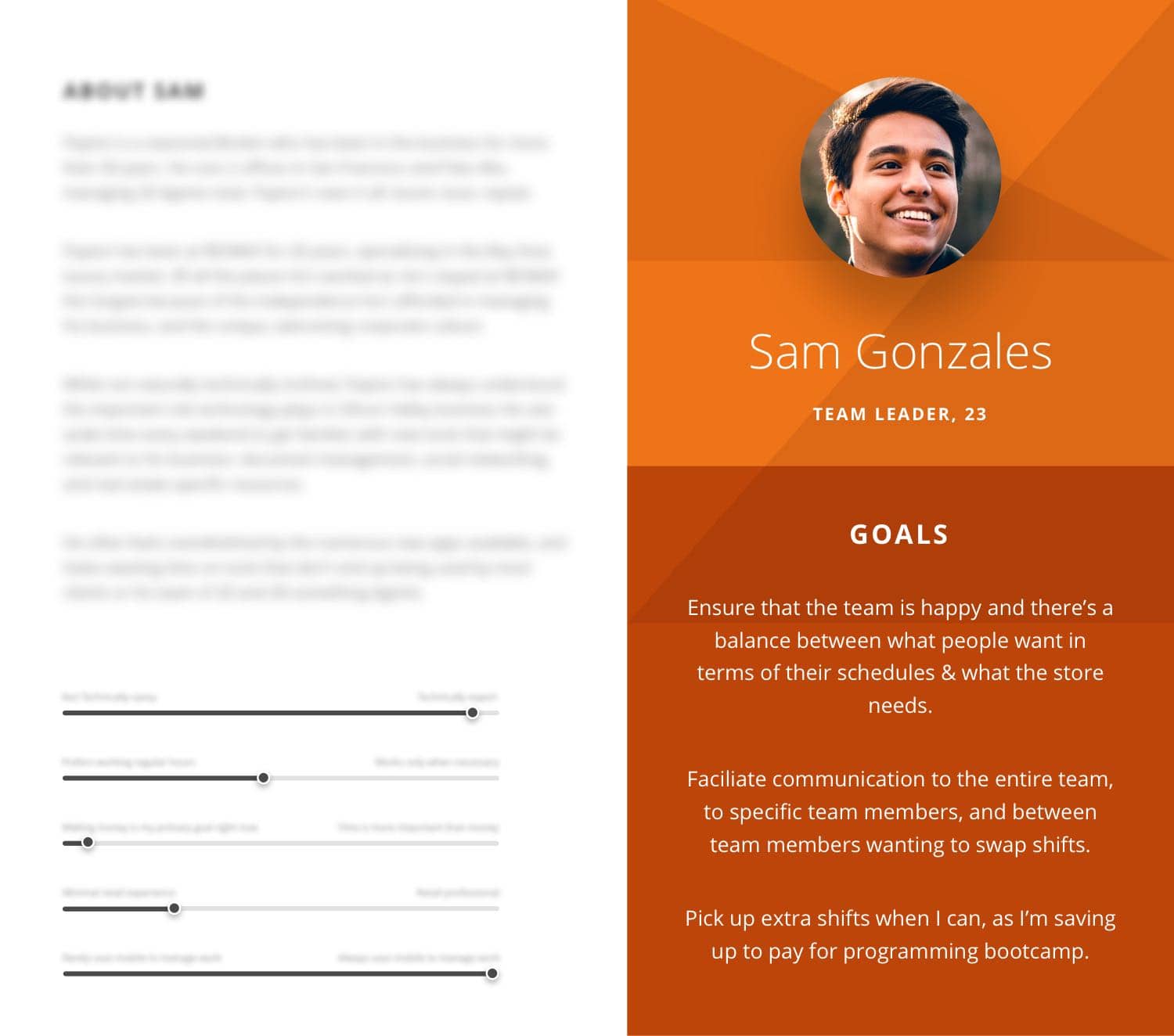
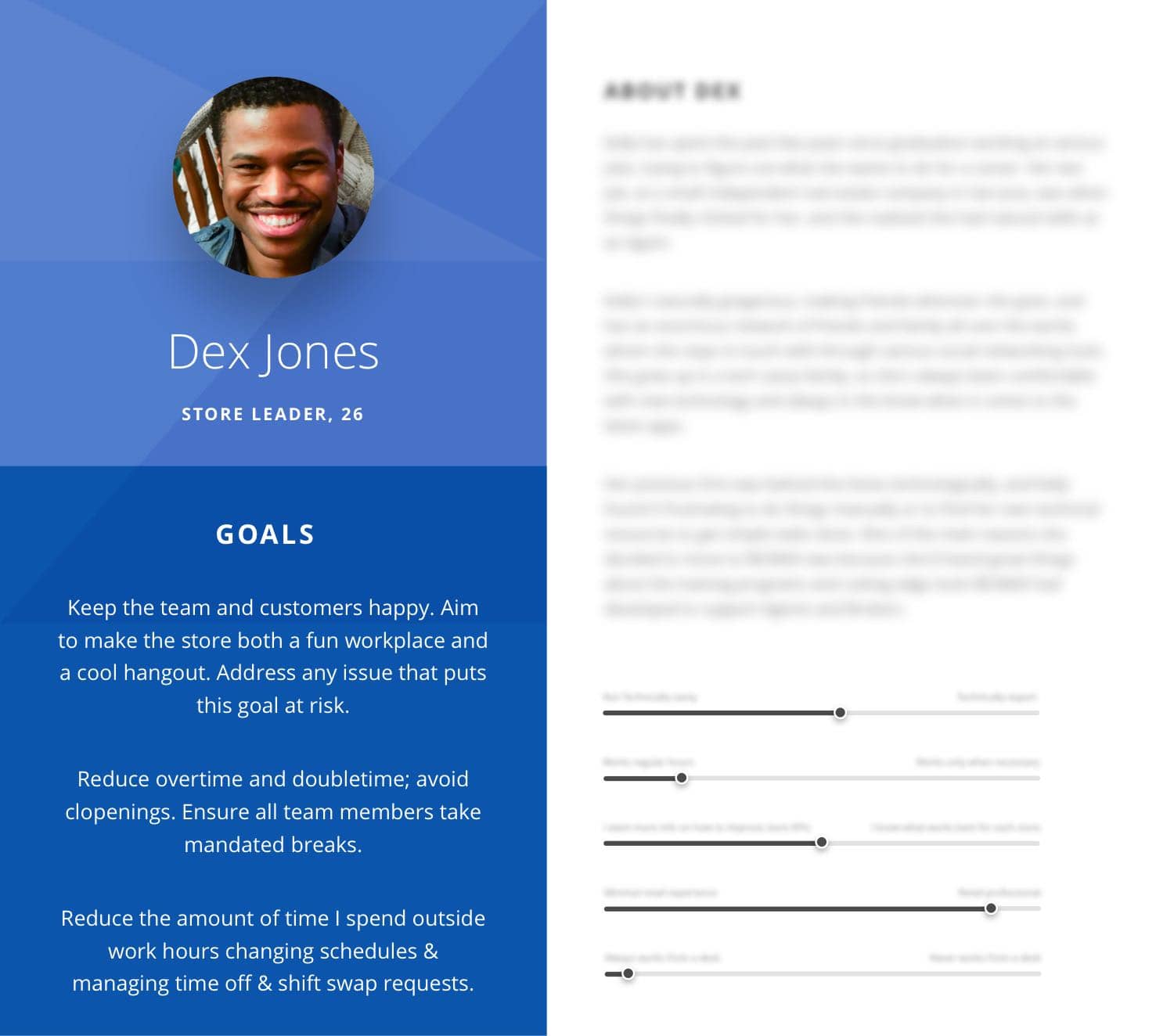
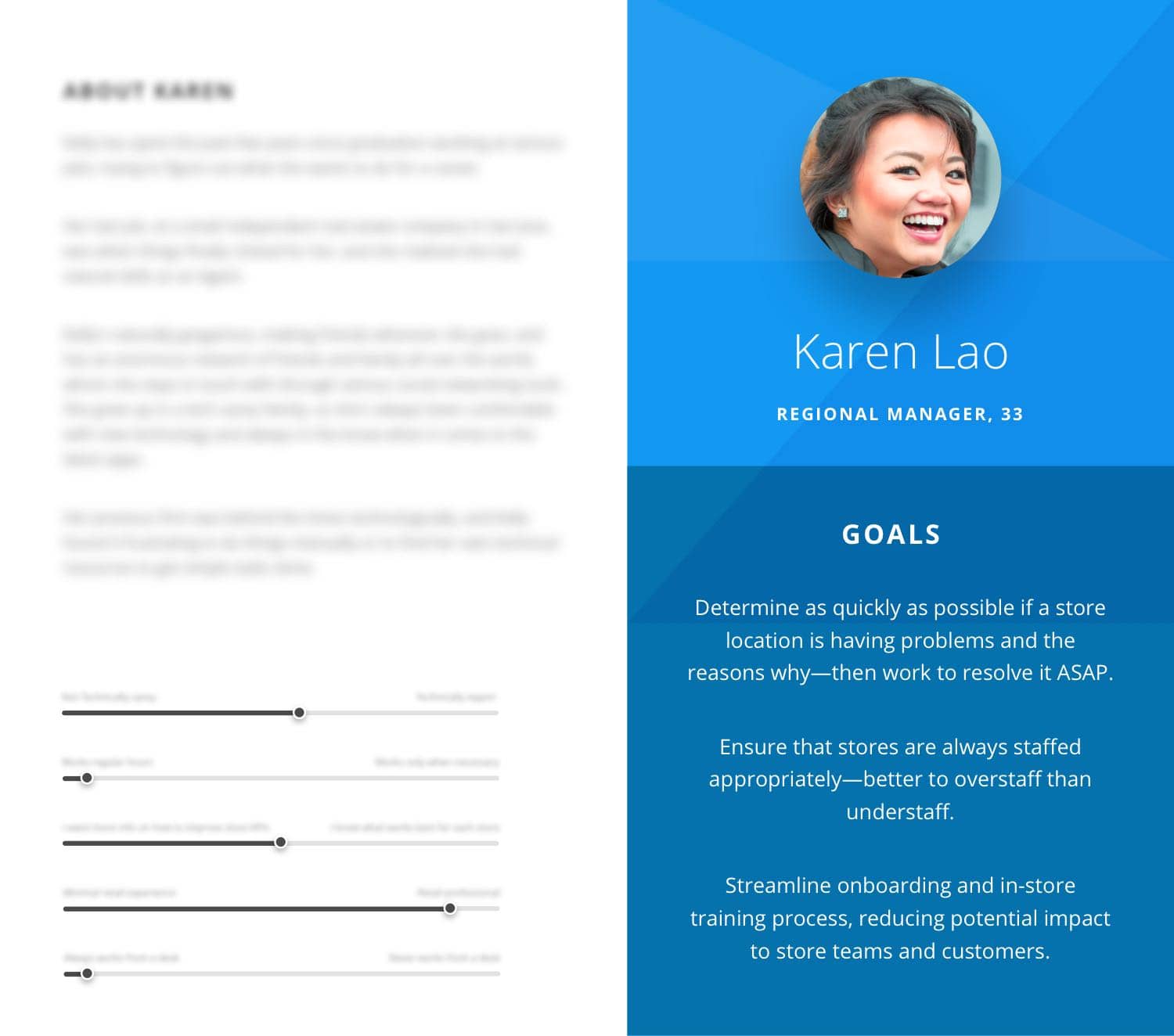

In researching hourly retail workers, I was struck by how hectic their personal schedules were and how they seemed to be in constant motion - shuttling back and forth between work, school, and personal activities.
Elaborating upon this notion, I developed the idea of presenting the mobile app as something that not only acknowledges this constant transitioning between activity, but is designed to accommodate this type of back and forth in their daily lives.
Photography was at the core of the new design concept. First, as a simple differentiator - most workforce management and scheduling apps use little if any photography; the photos that are used focus almost exclusively on work and tend to exhibit the forced cheerfulness, stilted scenarios, and corporate vibe so often present with traditional stock photography.
Second, photography provided a subtle yet powerful way by which Legion could mirror the millennial experience - and thereby acknowledge and show understanding of our users. I chose photographs showing young people on the go, in both work and non-work environments, sourced exclusively from small, lesser known photography sites that showcased the work of young, independent photographers.
While sourcing the right photo was a challenge given the limited available stock, those we hand-picked for Legion felt modern, evocative, almost journalistic in their lack of artifice, and as a result more in tune with the day-to-day experience of our millennial users.


The original palette was made up of dark primary and vibrant secondary colors. In order to polish the brand, without undergoing a complete overhaul, I had to be pragmatic. Given its prevalence, the dark "Legion blue" that served as our primary brand color was retained, while secondary and tertiary colors were replaced, reducing the overall vibrance of the palette to make the UI feel lighter, more approachable, and complementary to photography.
For screens requiring close attention and action from the user, the intent was to simplify the overall experience so as to enable a user to accomplish key tasks on the go - one-handed via simple taps, without requiring extensive scrolling, or complex, 2-handed gestures.
In order to direct user attention, I developed simple and clean interfaces that relied on copious white space, subtle pastels, small pops of color to guide focus, and judiciously chosen 1/2 screen photos to link those screens with and without photography.
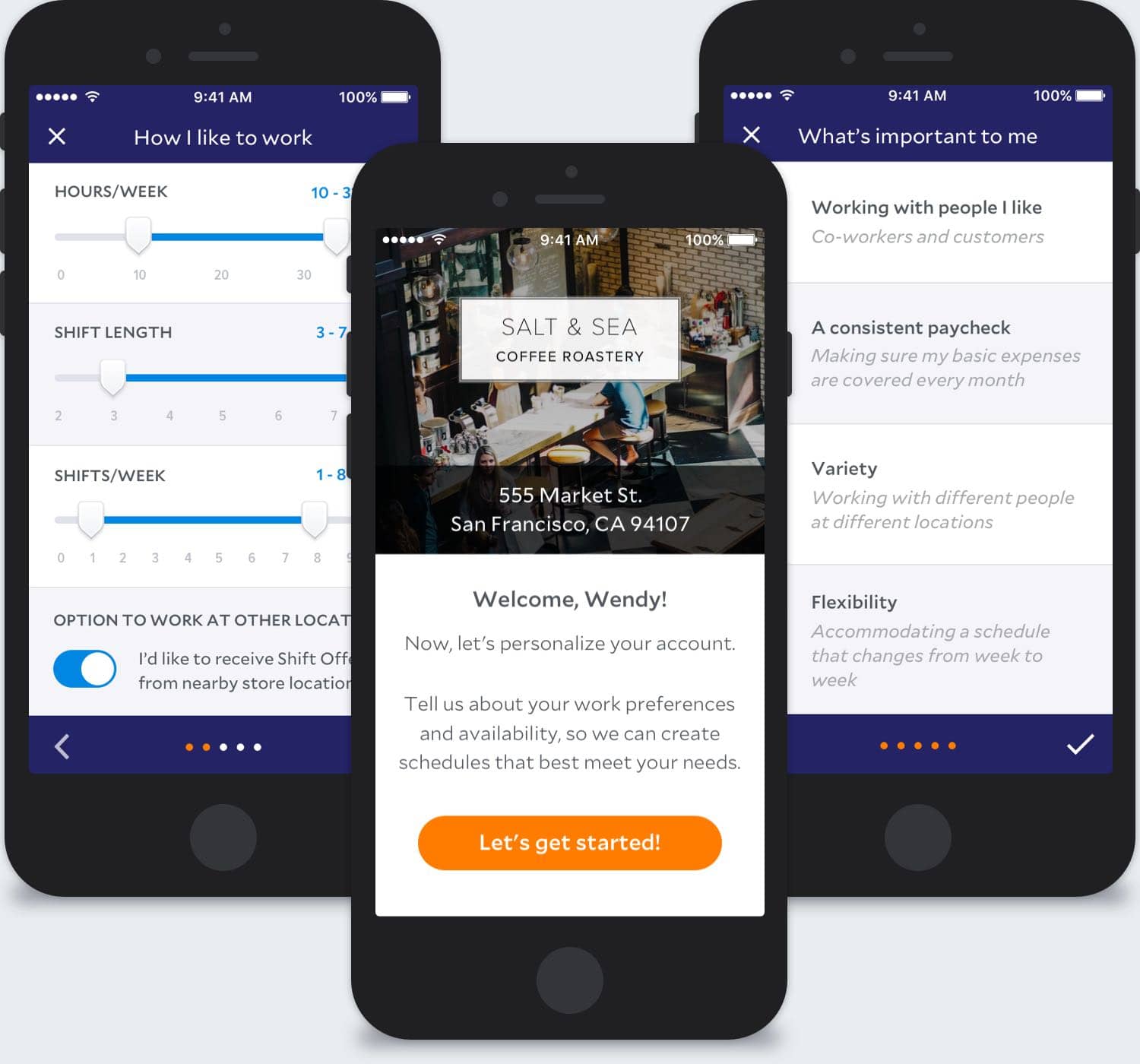
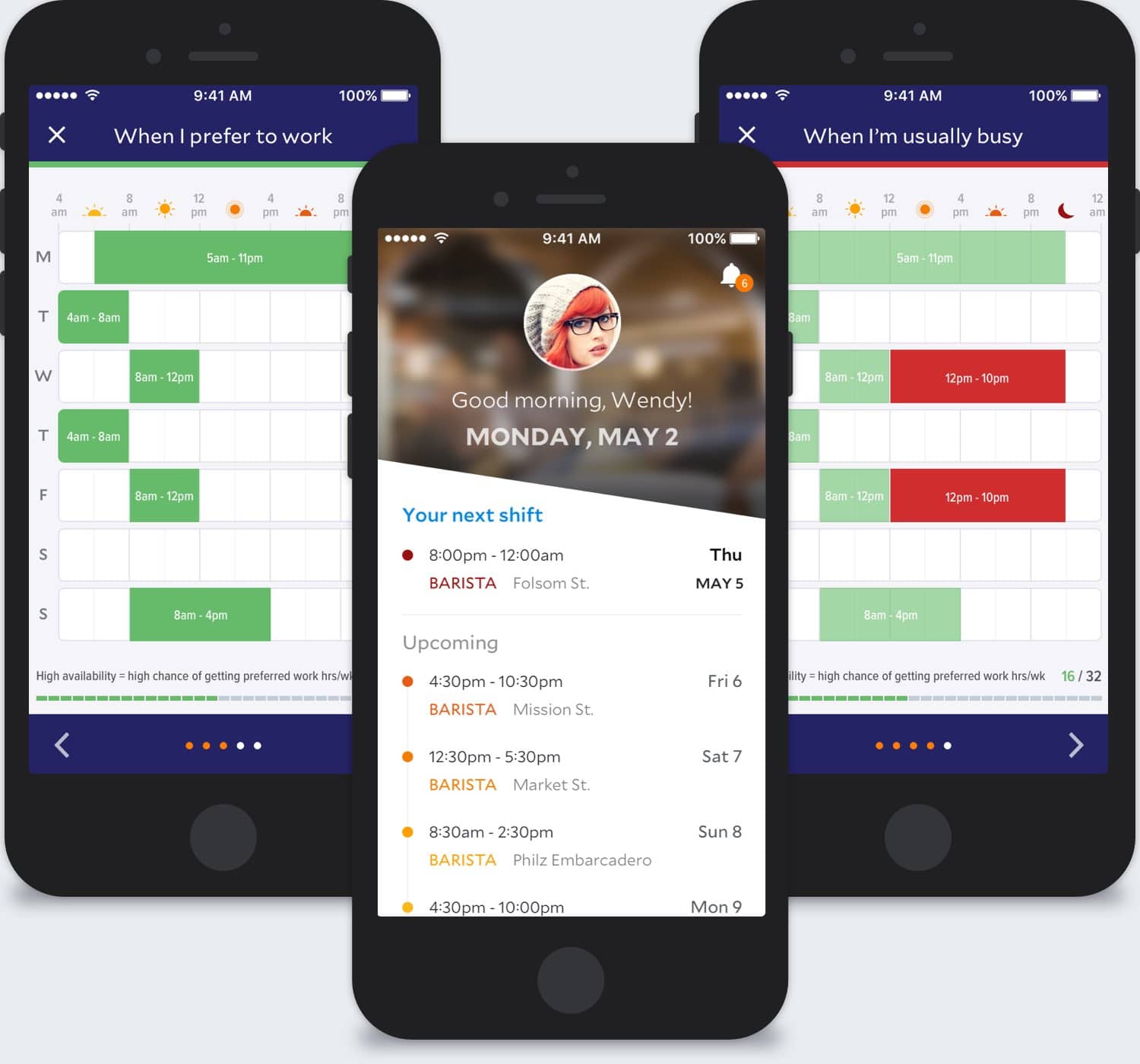
While the the new mobile app design concepts went through review cycles, I returned focus to the web console, re-architecting to accommodate the full console feature set, modifying core forecasting, schedule creation and staffing screens per feedback, while tackling the design of new features enabling account creation, configuration, and management, and advanced schedule and team management.
Once the mobile app design was finalized, again I switched gears and moved forward in applying the new design and branding, tackling all screens and flows in iterative sprints.
Similarly, while mobile features went through review cycles, I returned to the web console to update branding, address the latest feedback, and incorporate new feature requests. Throughout Phase 2, I continued with this approach, iteratively updating, improving, and expanding both apps per user and team feedback until the Legion platform reached full functionality and delivered the experience and value we were aiming for.

12
MONTHS
100+
ITERATIONS
10k+
SCREENS
Rapid design of new features, turnaround of user feedback on existing ones, and iterative refinement of the UX and Brand resulted in the team successfully meeting our goal of full platform design and release for Phase 2. Not only did the team meet our aggressive targets, but we also saw the immediate success of the Legion platform itself:

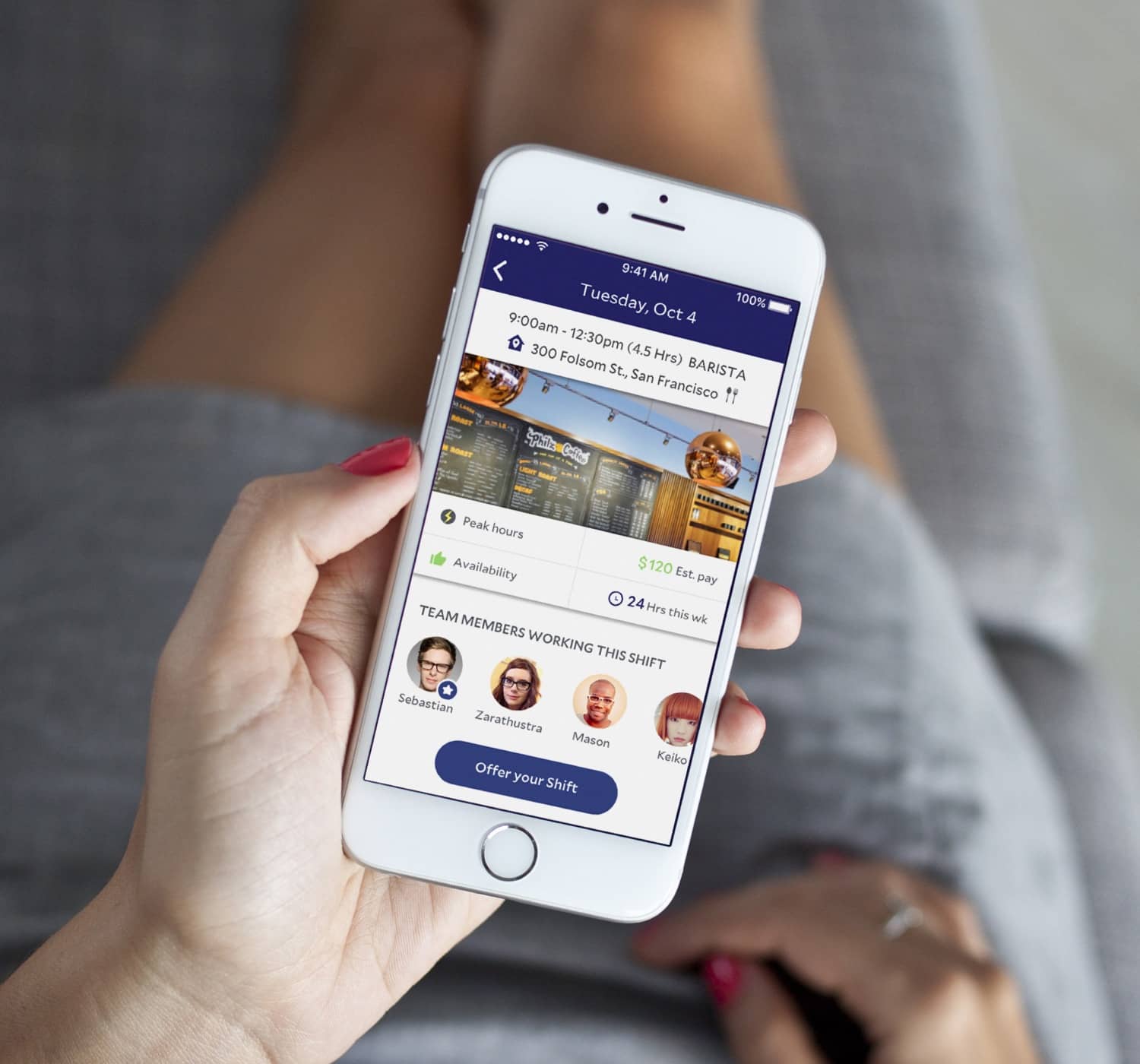
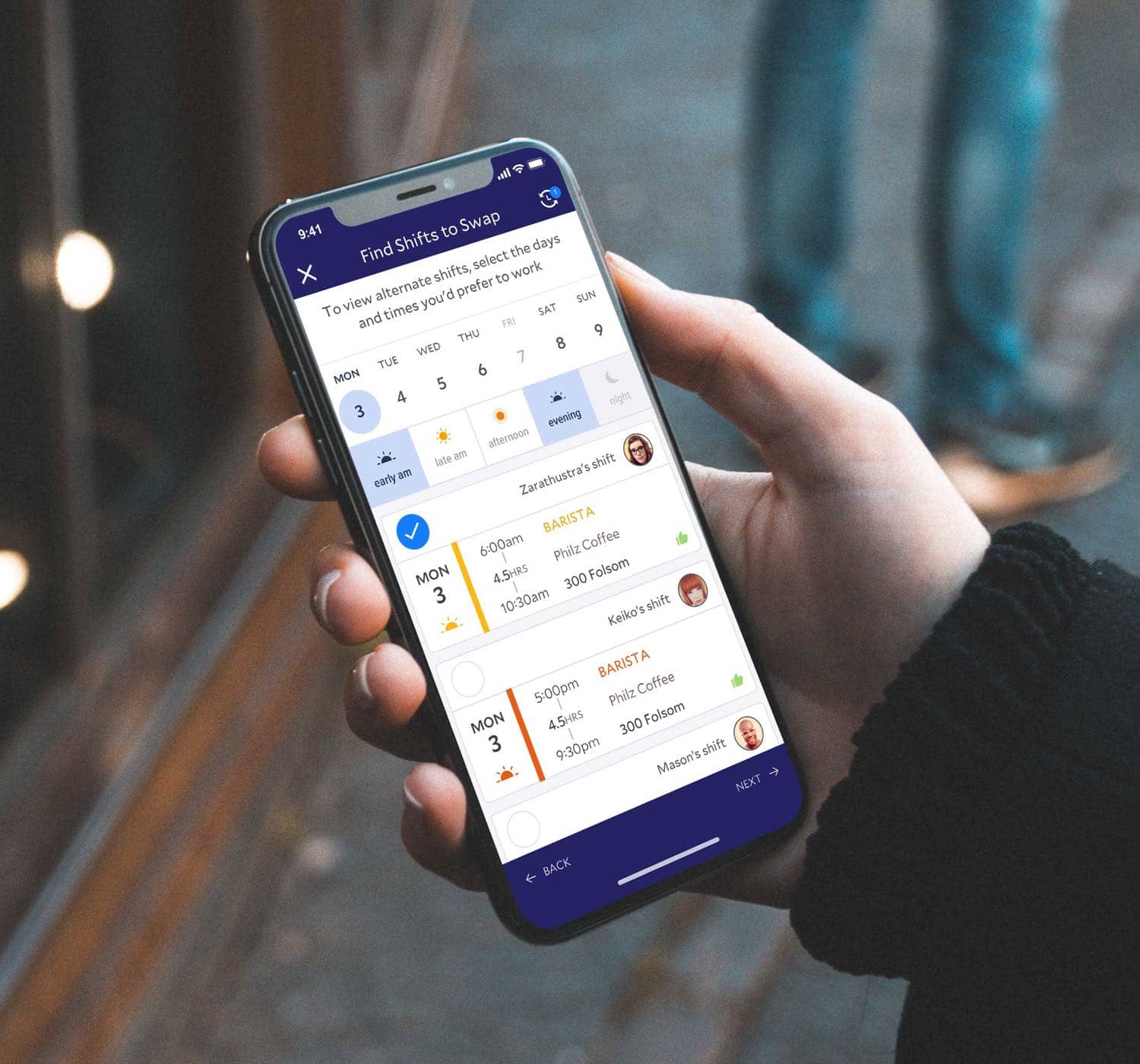

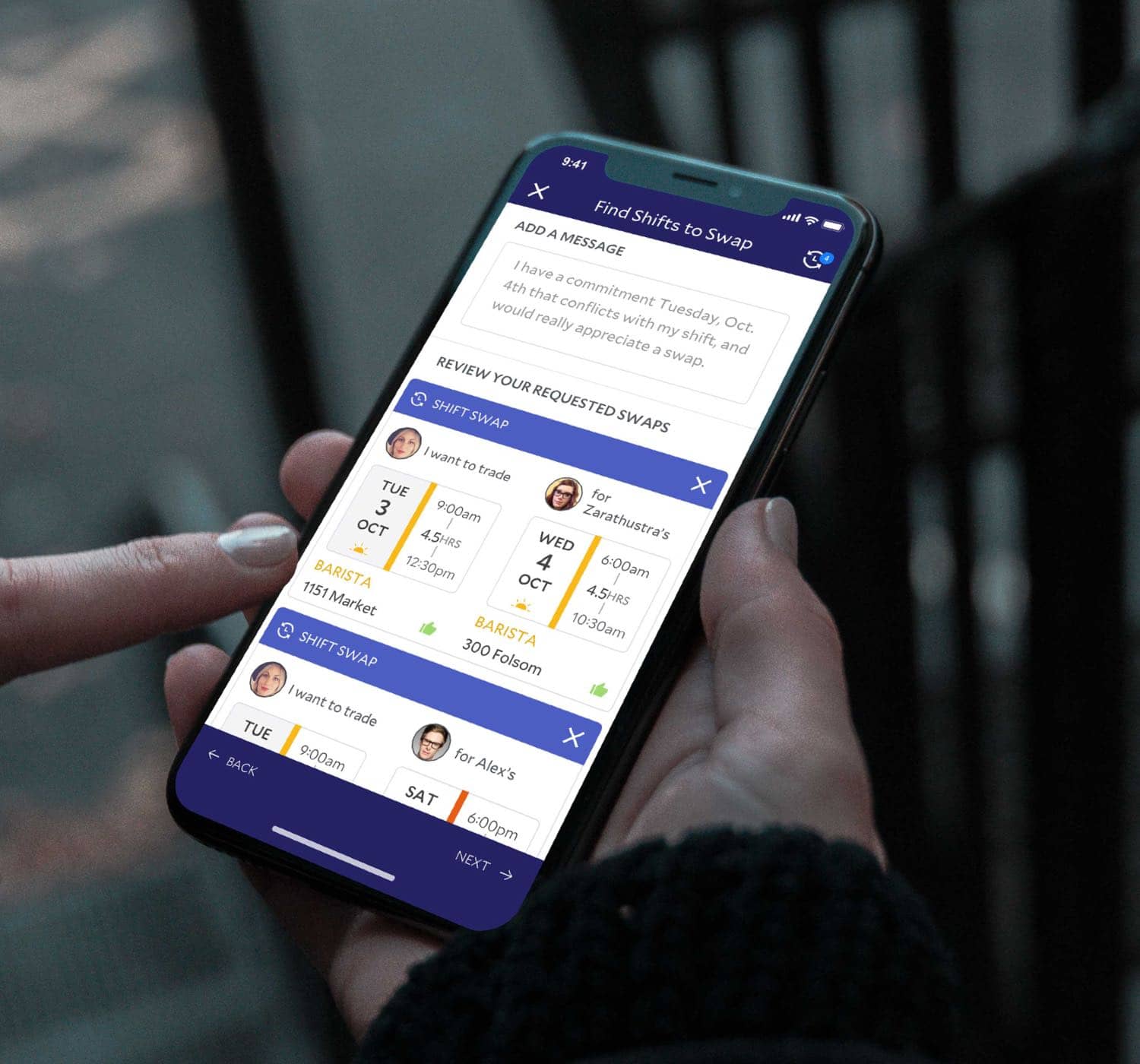
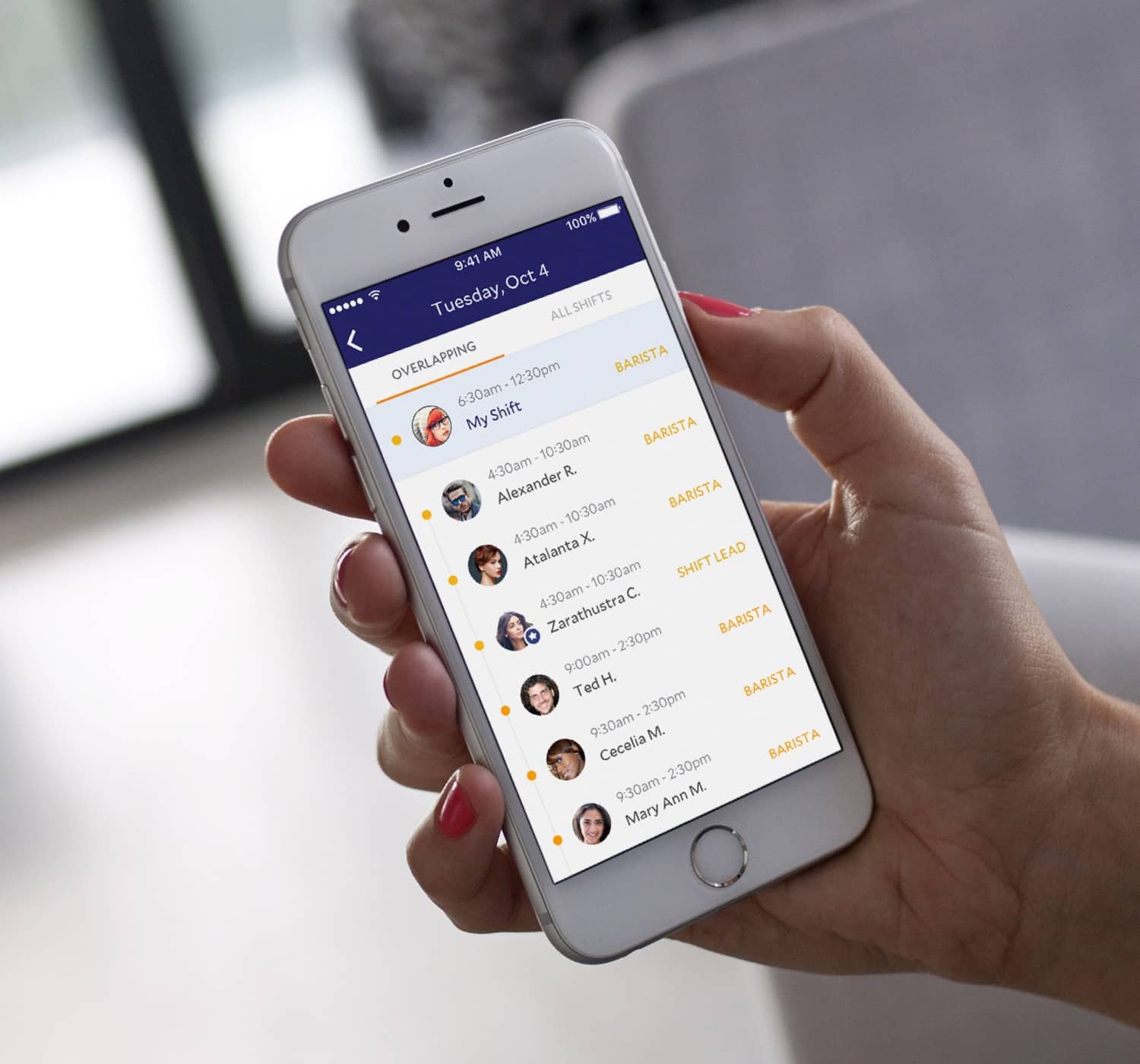

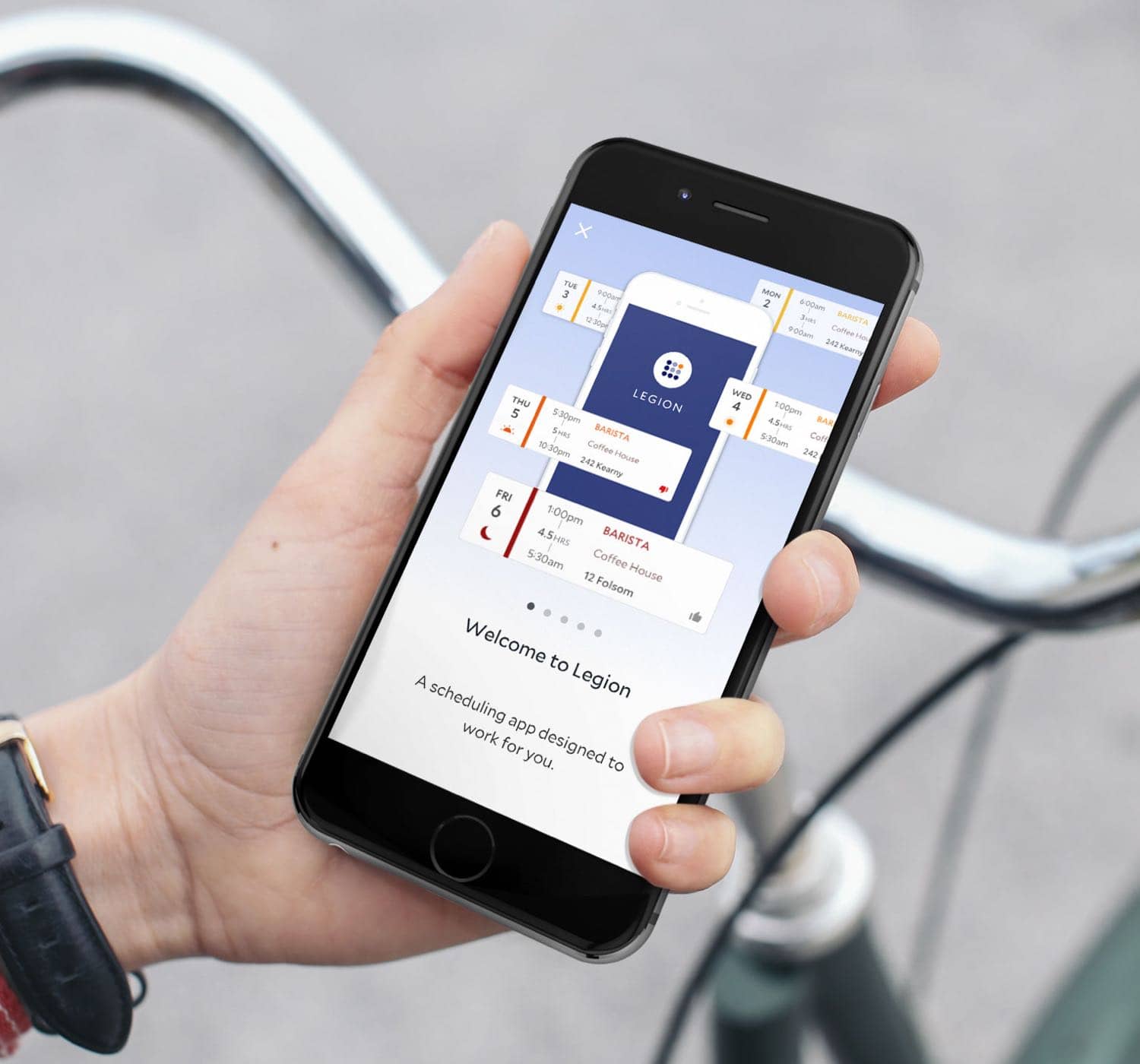
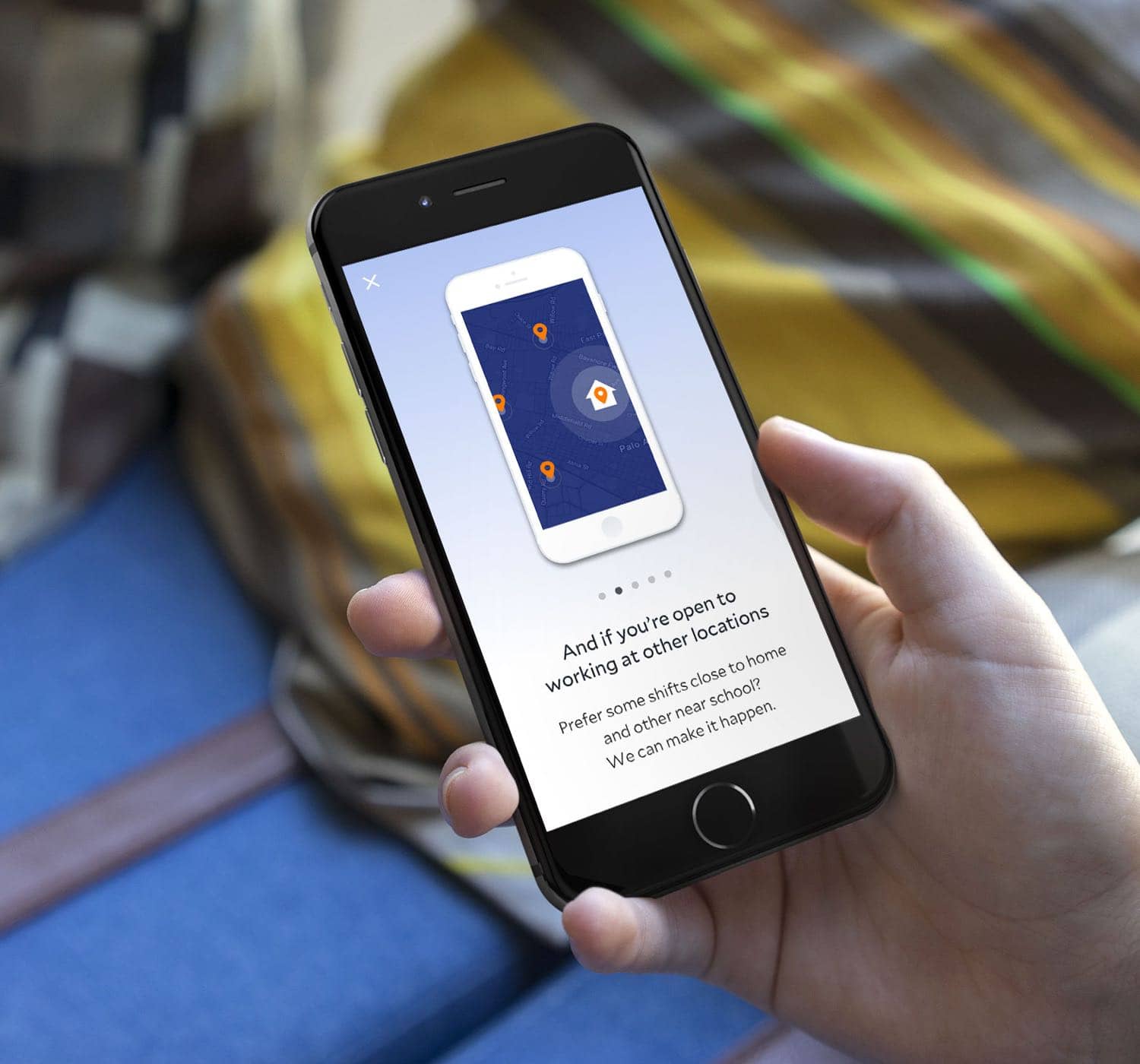
18
Months
10.5
Million

Our mission at Philz is for better days—not only for our customers, but also for our team members. Legion allows our team members to become active participants in the creation of their schedules and also makes it easy for us as a business to best serve our community. A magical accomplishment. Legion is the future.
Jacob Jaber
CEO, Philz Coffee